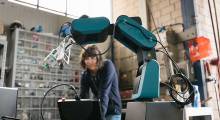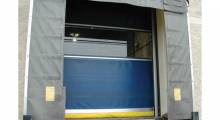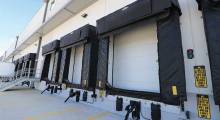Sometimes, I may sound like a broken record. Five or six years ago, I had a fascinating conversation about pallet and packaging design with Mark White, then a professor at Virginia Tech University and Modern’s resident pallet guru. I’ve been trumpeting the concept ever since. You’ll be able to hear White weigh in our annual pallet webcast in November.
White coined it the systems-based approach to unit load design. His premise was that the whole is greater than the sum of its parts, meaning that even if a pallet, corrugated, stretch wrap and other transport packaging materials are commodities, there are real savings to be had if you look at how they work together as a system.
It’s an idea being embraced by producers of other materials handling products that most of us don’t give much thought to. Look at RiteHite’s approach to dock equipment and Dehnco’s take on workstation design.
Fast forward a few years and the concept is being embraced by the pallet industry. Just a few weeks ago, Ongweoweh launched a unit load design practice. In November, my colleague Sara Specter will publish a report on Millwood’s new unit load test center.
What those companies share in common, besides pallets, is an expert who trained at Virginia Tech, where White came up with the concept. Today, I talked to John Clarke, technical director at the Nelson Company (http://www.nelsontechcenter.com) about the formal launch of their technical design center. Clarke earned his masters at Virginia Tech, worked as a research associate at the pallet lab and was the first director of the Center For Unit Load Design under White. “Learning about system design at Virginia Tech is one of the biggest advantages I’ve had since coming to work here in 2001,” Clarke told me. “When you’re in a commodity business like pallets and packaging, you can beat up the competition over pennies, or you can do a re-design and save your customer ten percent.”
The concept, he adds, is the real deal.
Although the Nelson Company is formally launching the program now – Clarke points out that the company just hired a packaging engineer from Michigan State – the company has been putting the systems-based approach to work for over ten years. The company can design unit load packaging, put it through its paces in lab testing, conduct field trials and then implement the solution. “We’ve done a number of Kaizen projects with customers that have led to cost savings and damage rate reductions,” Clarke says. “We do not do warehouse system design. But, we can work with a designer show them how they can reduce their pallet and packaging spend by altering their warehouse design.”
But the biggest savings, Clarke says, comes from transportation savings through better packaging design.
Still, Clarke and others concede that the end user community has been slow to jump on the bandwagon. Some of that may begin to change now that a handful of leading players are investing in tech centers and their own test labs. It may also change as senior executives become more aware of the importance of their supply chains to their operations.
“It’s hard to convince a purchasing agent to spend money on packaging to save on transportation when they don’t get a bonus for reducing freight costs,” Clarke says. “When we talk to the corporate level, they get it.”
“Thanks to the unit load concept, you know have pallet people with the background and knowledge to speak to corporate level packaging engineers and vice presidents of logistics,” Clarke adds.







